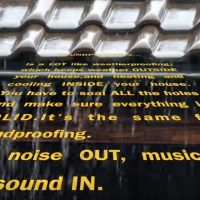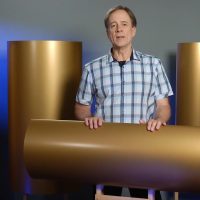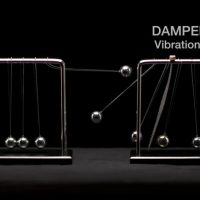How Sound Works (In Rooms) (AcoGeo)
How Sound Works (In Rooms) (AcoGeo) Video Transcript
Hi, I’m John Calder of Acoustic Geometry. Let’s talk about “Acoustics”, which is basically “how sound works in rooms”, and it seems complicated.
So, let’s make it simpler.
Most rooms have flat walls and ceilings, and sound bounces off of these. So how does that affect the sound?
I’ll use these two Nerf guns to demonstrate.
I’ve got this one aimed so this disc goes directly to the ear – this disc represents Direct Sound.
I’ve got this one aimed so that disc bounces off the wall, and it represents Reflected Sound. I’ll shoot them both at the same time.
Reflected Sound arrives at our ears later than Direct Sound, even though it started out at the same time. Because it’s travelling farther.
And this is only one flat surface – there are at least six in the average room, and that’s a lot of reflected sound.
But why is reflected sound bad? I’ll demonstrate using these two identical patterns. The BLUE pattern represents Direct Sound Waves and the RED represents Reflected Sound Waves.
They start out together. But when I move the red one backwards, like a delayed sound reflection, it creates Destructive Interference patterns, which changes the original sound wave.
Here’s the problem: Original sound waves are distorted by strong later-arriving reflections.
Also, sound wave energy is really fast, about 1130 feet per second. A sound wave will bounce back and forth between these two walls about 60 times in one second.
Sound travels so fast, it fills a room almost instantly. And this is only one bounce angle – every room has thousands.
The Big Acoustics Question:
How can we make our room sound better? Remember our Nerf guns? I’ll shoot these at the same time, again representing a sound wave bouncing off a wall.
Both discs bounce together in the same direction, which means the reflected sound is at full strength.
Now let’s the first of our two acoustical tools – an Absorber to reduce the strength of sound bounces.
To a sound wave, an absorber looks a little like a hole in the wall, so some of the energy doesn’t come back.
An absorber works by reducing the strength of reflected sound that would otherwise cause more destructive interference.
But if we use only absorbers in a room, it makes it sound dull and unnatural. Historically, humans don’t like overly-absorbent rooms.
So – let’s use the second of our two acoustical tools – the curved-surface Diffusor. It also reduces the strength of sound bounces.
A diffusor works by scattering the sound reflections in different directions, smoothing out destructive interferences throughout the room.
Room Acoustics are greatly improved using a combination of absorption and diffusion.
It’s all about reducing those flat-surface reflections. Use a combination of absorbers and diffusors, and your room will sound a lot more natural. Thanks for watching.



 What’s First?
What’s First? Your Brain On Sound (AcoGeo)
Your Brain On Sound (AcoGeo) Acoustic Panels – What & Where (AcoGeo)
Acoustic Panels – What & Where (AcoGeo) What Is Soundproofing?
What Is Soundproofing?